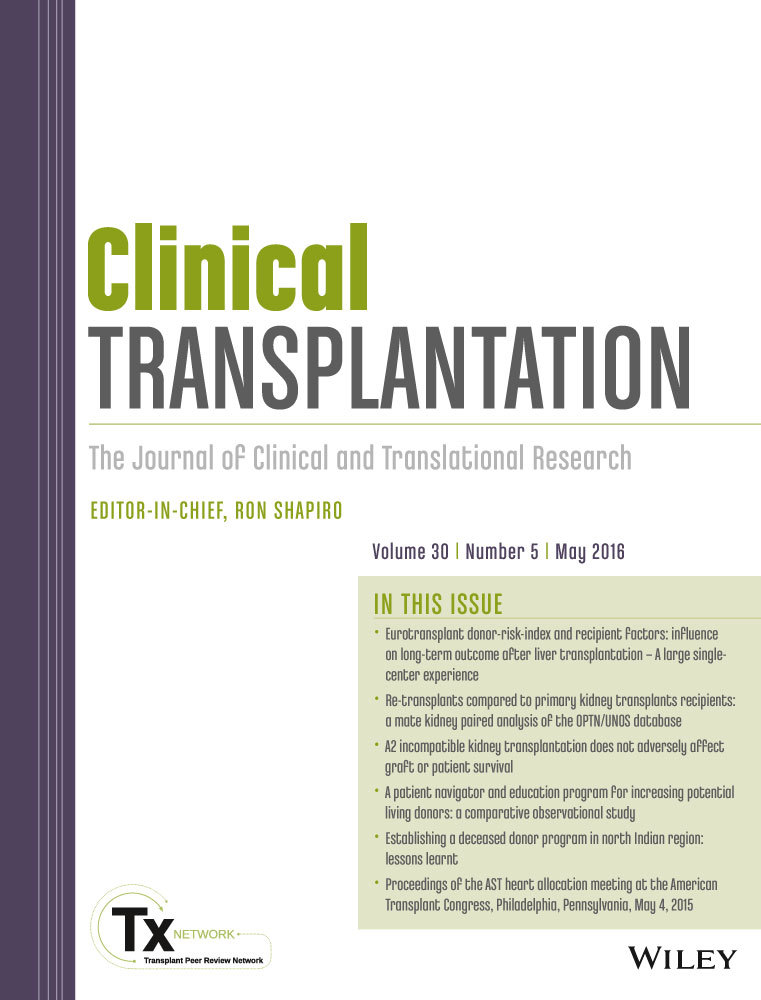The survival benefit of kidney transplantation in the setting of combined peripheral arterial disease and end-stage renal failure
Abstract
Given the deleterious effects of concomitant peripheral arterial disease (PAD) and severe renal disease, a role for aggressive screening and management of PAD in renal failure patients has been suggested. However, limited data exist detailing the impact of PAD on kidney waitlist survival and the potential benefit of transplantation in PAD. Multivariable COX regression and Kaplan–Meier survival models were fit using UNOS data to assess kidney waitlist and post-transplant five-yr survival. Compared to PAD−Dial− (no PAD or dialysis) waitlist survival, PAD+Dial− was associated with a 36%, PAD−Dial+ a 95%, and PAD+Dial+ a 190% increased risk of death. A significant survival benefit of kidney transplantation was identified in the PAD population (p < 0.001, HR = 0.440 comparing post-transplant to waitlist survival). Time to survival benefit (equal mortality between waitlist and post-transplant population) of kidney transplantation in PAD+ was realized 2.5 times sooner in pre-emptive transplantation than transplant after dialysis (154 d vs. 381 d), per unadjusted Kaplan–Meier analysis. To our knowledge, this is the first study to demonstrate a survival benefit of kidney transplantation in the setting of PAD. Pre-emptive transplantation with emphasis on living donation prior to dialysis should be advocated to improve outcomes in this high risk patient population.




